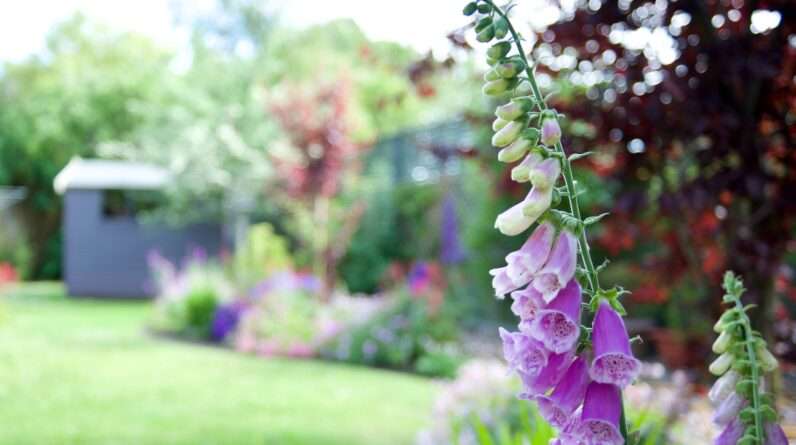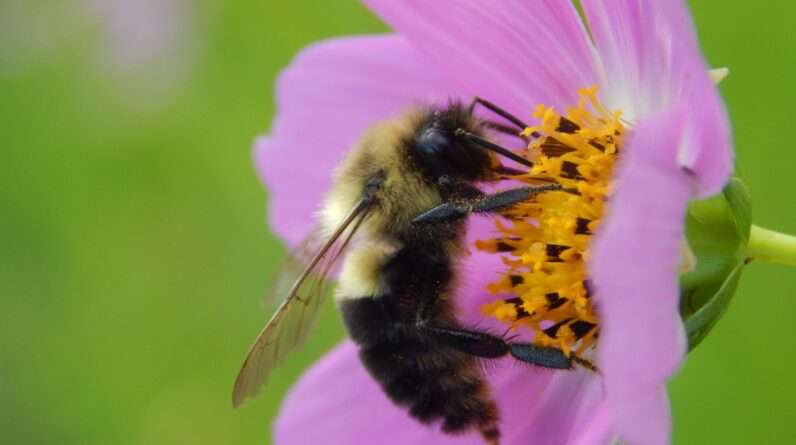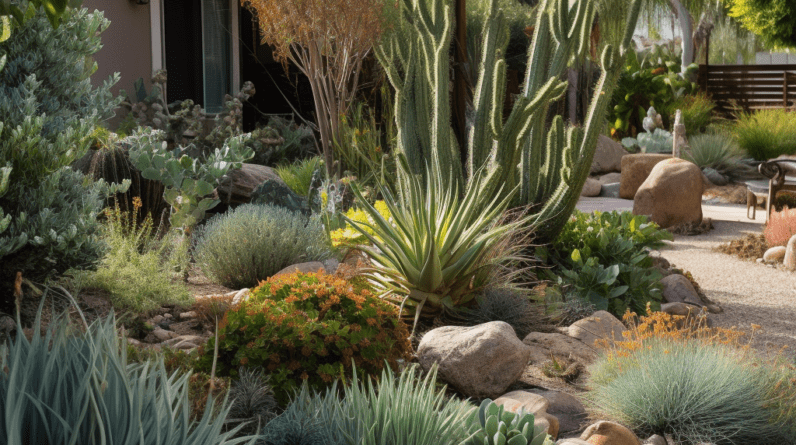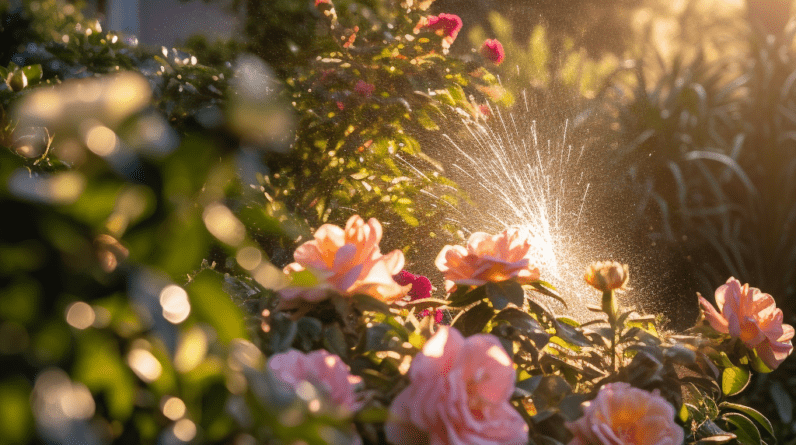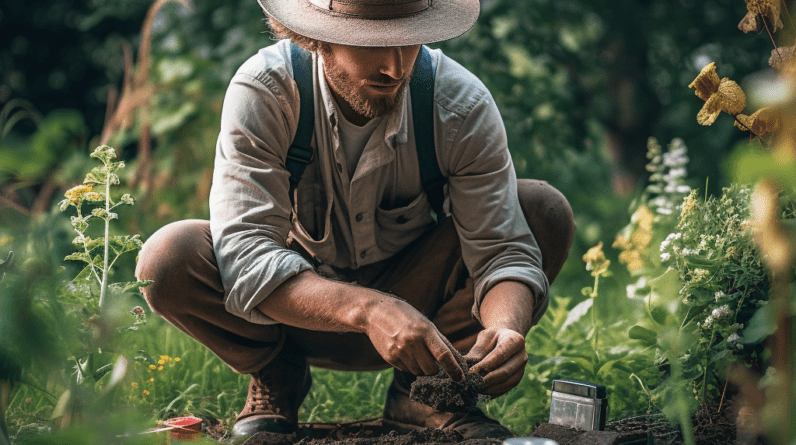
Imagine walking through a beautiful garden, the sun shining down on you and a gentle breeze carrying the sweet scent of flowers to your nose. It’s a sensory experience that can transport you to a place of peace and tranquility.
If you’re looking to create this kind of paradise in your own backyard, then look no further than the most fragrant flowers and shrubs for a summer garden. Summer is the perfect time to bring your garden to life with an array of colors and scents.
Whether you’re an experienced gardener or just starting out, adding fragrant flowers and shrubs to your garden can create a serene and inviting atmosphere. From classic roses to unique sweet olive, there are endless options to choose from that will fill your garden with the delightful aromas of summer.
So, let’s dive into the world of fragrant plants and discover which ones are perfect for your summer garden.
Key Takeaways
- Fragrant plants like roses, sweet olive, lavender, heliotrope, and gardenias can add a serene and inviting atmosphere to a summer garden.
- These plants can be used for ornamental and medicinal purposes, as well as culinary and symbolic meanings.
- They require specific growing conditions such as well-draining soil, full sun exposure, and regular watering, but are generally easy to grow and care for.
- Fragrant plants also have therapeutic benefits, antibacterial and antifungal properties, and can add sophistication and elegance to any outdoor space.
Classic Roses for a Timeless Fragrance
You can’t go wrong with classic roses for a timeless fragrance that will transport you to a romantic summer garden. These roses have been a staple in gardens for centuries and have a rich history filled with symbolic meanings.
For example, red roses symbolize love and passion, while pink roses represent gratitude and appreciation. With so many different colors and meanings to choose from, classic roses are a great way to add meaning and beauty to your garden.
When it comes to growing classic roses, there are a few best practices to keep in mind. First, make sure to plant them in an area that gets plenty of sunlight and has well-draining soil. Roses also need regular watering and pruning to stay healthy and vibrant.
With a little bit of care and attention, your classic roses will thrive and fill your garden with their sweet fragrance all summer long.
Incorporating classic roses into your garden is a surefire way to create a romantic and timeless atmosphere. But if you’re looking for a unique and pleasant scent, consider adding sweet olive to your garden as well. This fragrant shrub produces small white flowers that give off a sweet scent, making it a great addition to any summer garden.
Sweet Olive for a Unique and Pleasant Scent
Interestingly enough, it’s not just roses and lavender that can bring a pleasant scent to your backyard oasis – have you considered adding Sweet Olive to your landscaping? This shrub, also known as Osmanthus fragrans, is a versatile plant that can be used in a variety of ways to add both beauty and fragrance to your outdoor space.
One of the most popular uses of sweet olive in landscaping is as a hedge or border plant. Its dense evergreen foliage and small, fragrant flowers make it an excellent choice for creating a natural barrier or adding depth and texture to your garden design. Additionally, sweet olive can be trained to grow as a small tree or espalier, making it a great option for small gardens or tight spaces.
In addition to its ornamental uses, sweet olive can also be used in recipes to add a unique and delicate flavor. The flowers of the plant can be infused into syrups or baked into cakes and pastries for a subtle, floral taste. So, whether you’re looking to add a sweet scent to your garden or a new flavor to your cooking, sweet olive is definitely worth considering.
And speaking of calming scents, lavender is another great option to consider for your summer garden. Its soothing aroma and beautiful blooms make it a popular choice for both landscaping and aromatherapy.
Lavender for a Calming and Soothing Aroma
Adding lavender to your backyard oasis can bring a calming and soothing aroma that’s perfect for relaxation. Lavender has been used for centuries in aromatherapy due to its calming properties. The scent of lavender has been shown to reduce stress and anxiety, making it an excellent addition to your summer garden.
Lavender is also easy to grow and care for, making it a great option for both experienced and novice gardeners. When planting lavender, it’s important to choose a location with well-draining soil and full sun exposure. Lavender plants require minimal watering and can even thrive in drier climates.
With proper care, your lavender plants will bloom from late spring through summer, filling your garden with their beautiful purple flowers and calming scent.
In addition to its relaxing aroma, lavender can also be used for culinary purposes. The flowers can be dried and used to add a subtle floral flavor to baked goods, teas, and even cocktails. So, not only is lavender a beautiful and calming addition to your garden, but it can also be a versatile ingredient in your kitchen.
Next, let’s explore the benefits of adding heliotrope to your summer garden for a sweet and vanilla-like fragrance.
Heliotrope for a Sweet and Vanilla-Like Fragrance
Heliotrope harbors a heavenly, honeyed aroma that’s sure to enhance any backyard oasis. This sweet, vanilla-like fragrance offers a multitude of benefits. Here are four things you should know about heliotrope:
- Heliotrope essential oil: Heliotrope essential oil is extracted from the flowers of the heliotrope plant and is known for its calming and soothing properties. It’s often used in aromatherapy to promote relaxation and relieve stress. Additionally, the oil is believed to have antibacterial and antifungal properties, making it a popular ingredient in natural skincare products.
- Tips for growing and caring for heliotrope plants: Heliotrope plants thrive in full sun and well-drained soil. They should be watered regularly but not overwatered as this can lead to root rot. Deadheading spent blooms will encourage the plant to continue blooming throughout the summer. Pruning can also help to keep the plant compact and bushy.
- Heliotrope’s versatility: Heliotrope’s sweet fragrance and attractive purple or white flowers make it a popular choice for both ornamental and medicinal purposes. The plant’s leaves and flowers have been used in traditional medicine to treat respiratory issues, skin conditions, and insect bites.
As heavenly as heliotrope is, gardenias offer a strong and intense perfume that’s hard to ignore.
Gardenias for a Strong and Intense Perfume
With their alluring scent, gardenias are a must-have for anyone looking to add a touch of sophistication to their outdoor space. These flowers are famous for their strong and intense perfume that can be detected from far away. In fact, gardenias are so fragrant that they are often used in aromatherapy to promote relaxation and reduce stress.
If you’re planning to grow gardenias in your garden, there are a few things you should keep in mind to ensure that they thrive. First and foremost, gardenias need plenty of sunlight to grow and produce flowers. They also prefer acidic soil that is well-draining and rich in organic matter. To keep your gardenias healthy and fragrant, make sure to water them regularly and fertilize them with a balanced fertilizer during the growing season.
Besides their beauty and fragrance, gardenias have several other uses in aromatherapy. For instance, the essential oil extracted from gardenia flowers is believed to have many therapeutic benefits, such as reducing inflammation, soothing headaches, and easing depression. You can use gardenia essential oil in a diffuser, massage oil, or as an ingredient in your skincare products to enjoy its therapeutic effects.
So why not add a few gardenias to your garden and enjoy their beauty and fragrance while reaping their therapeutic benefits?
Frequently Asked Questions
How much sun exposure do these fragrant flowers and shrubs require?
To keep your fragrant flowers and shrubs healthy, make sure they get the proper amount of sunlight. Some prefer partial shade, while others need full sun. Soil preferences vary, so check your plant’s needs before planting.
Do any of these plants attract bees or other insects?
Looking to attract insects to your fragrant garden design? Consider adding plants like lavender or roses, which are both known for their sweet scent and ability to draw in bees and other pollinators.
Can these plants be grown in containers or do they require a garden bed?
You can definitely grow fragrant flowers and shrubs in containers! For example, my friend grows lavender in a pot on her balcony. Just make sure to use well-draining soil and choose plants that don’t have deep root systems.
What is the average lifespan of these fragrant plants?
Plant longevity varies depending on the species. Maintenance requirements, such as pruning and fertilizing, can help extend the life of fragrant plants. Keep an eye on their health and make adjustments as needed to ensure a long lifespan.
Are there any special care instructions or pruning techniques for these plants to maintain their fragrance?
To maintain fragrance in your plants, use pruning techniques for proper growth and airflow. Also, ensure soil requirements are met for optimal health. Keep these tips in mind to care for your plants and enjoy their fragrant blooms.

